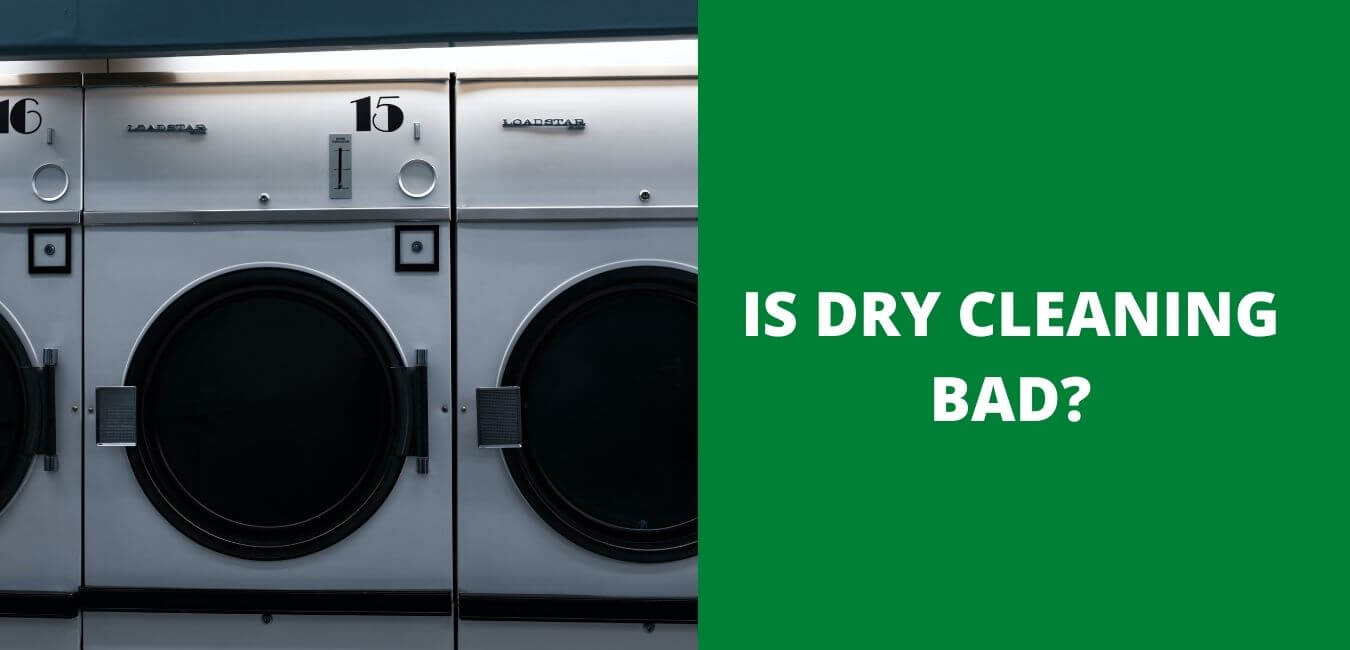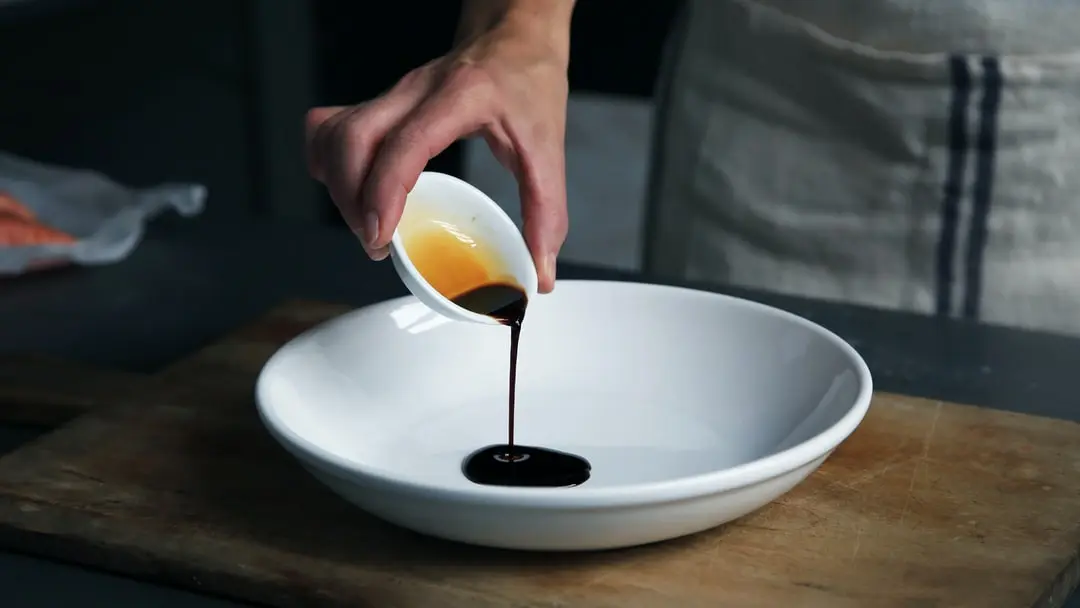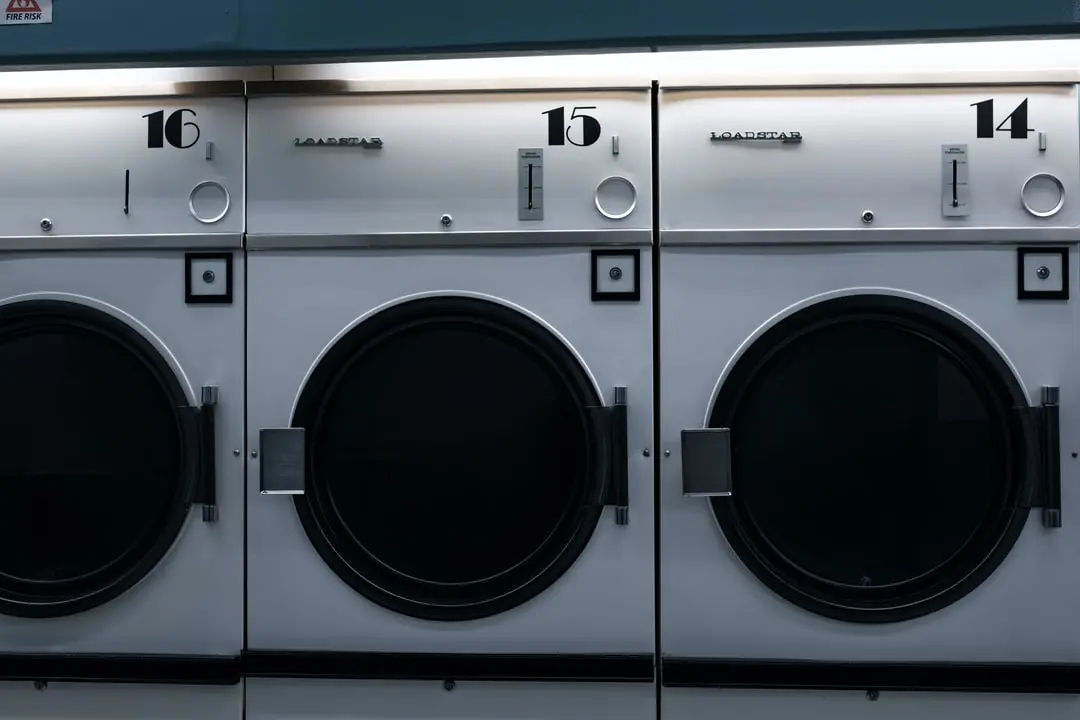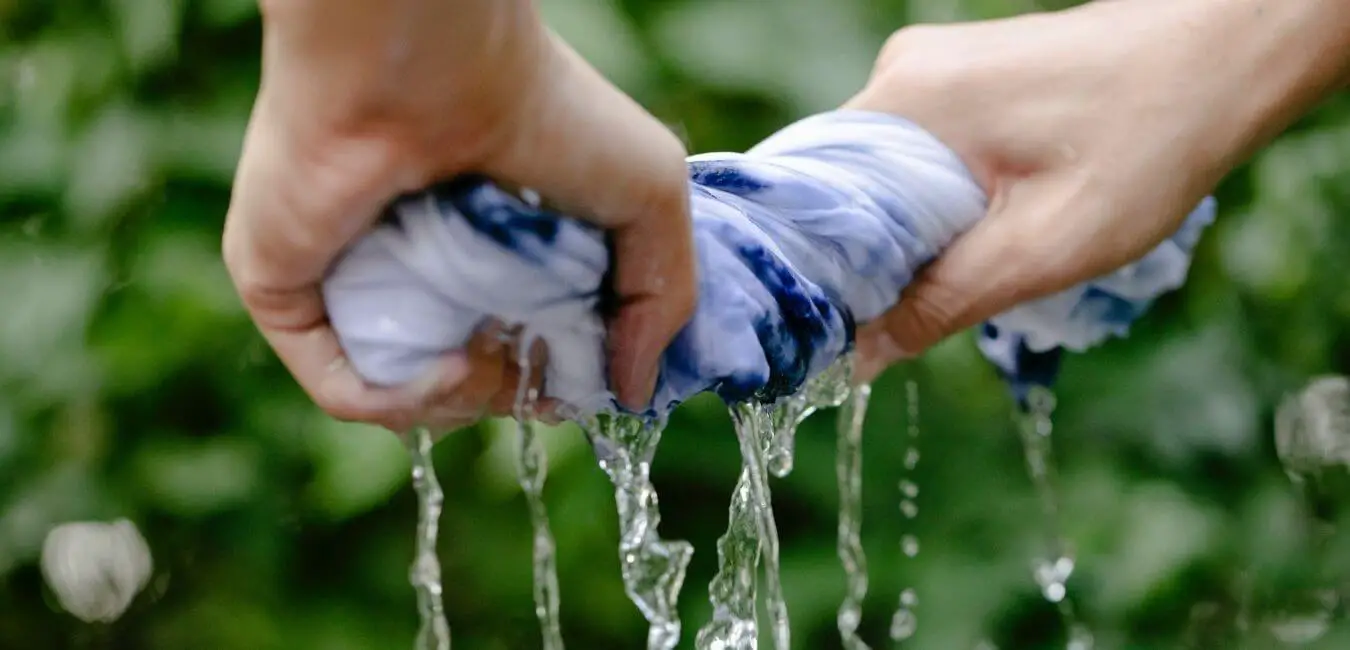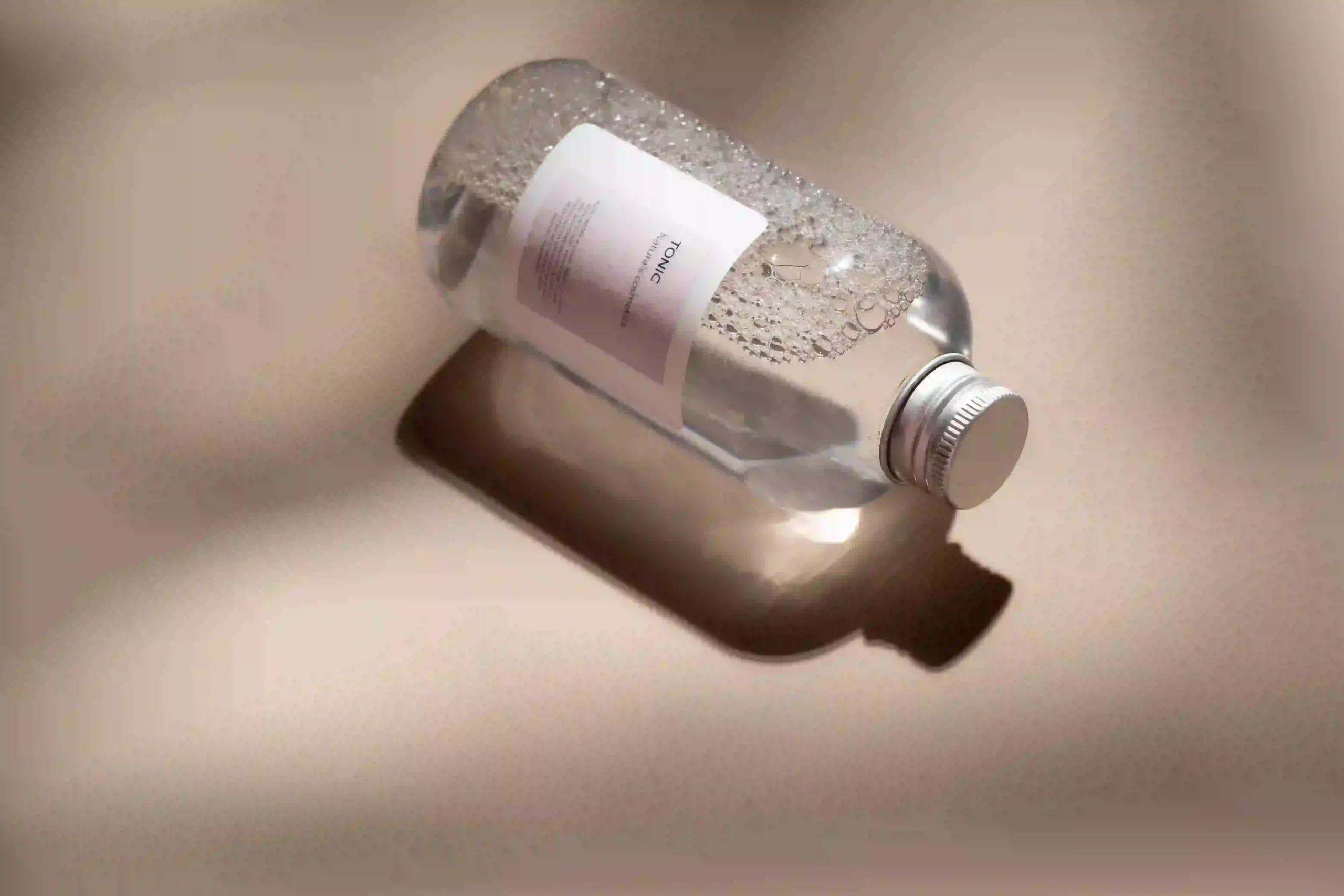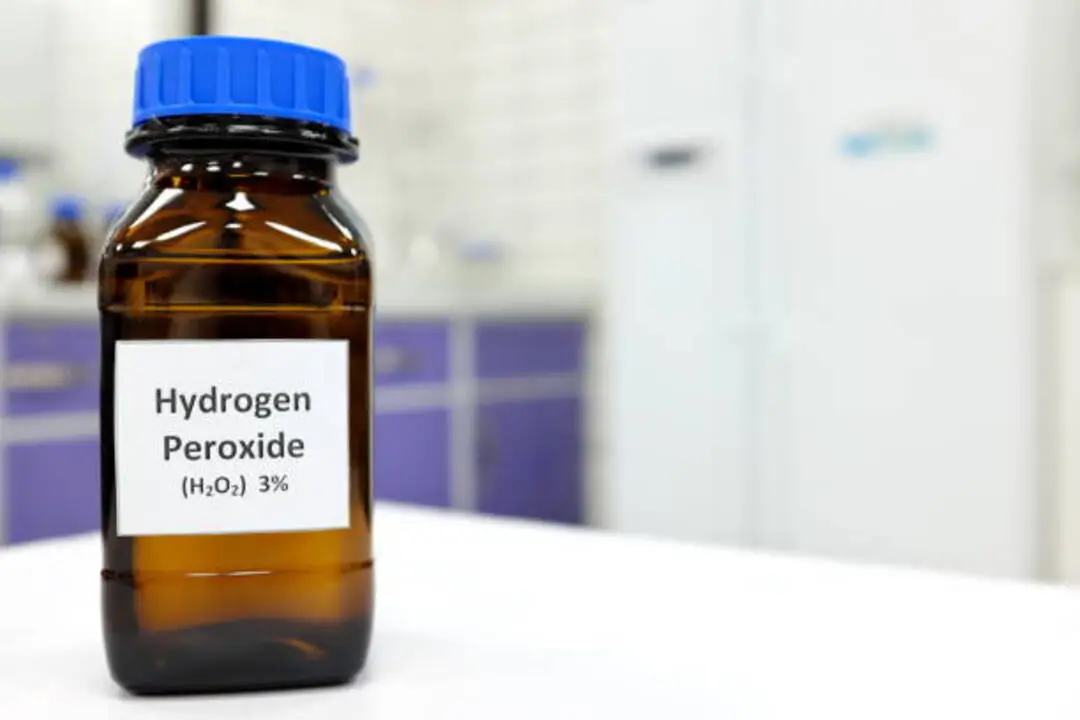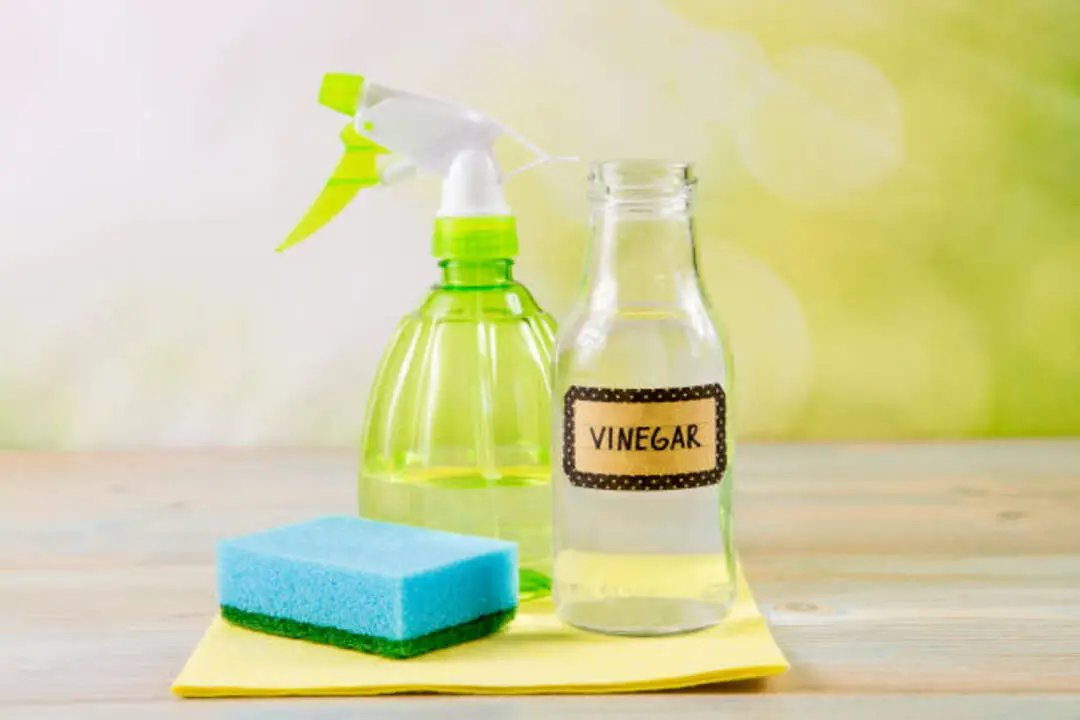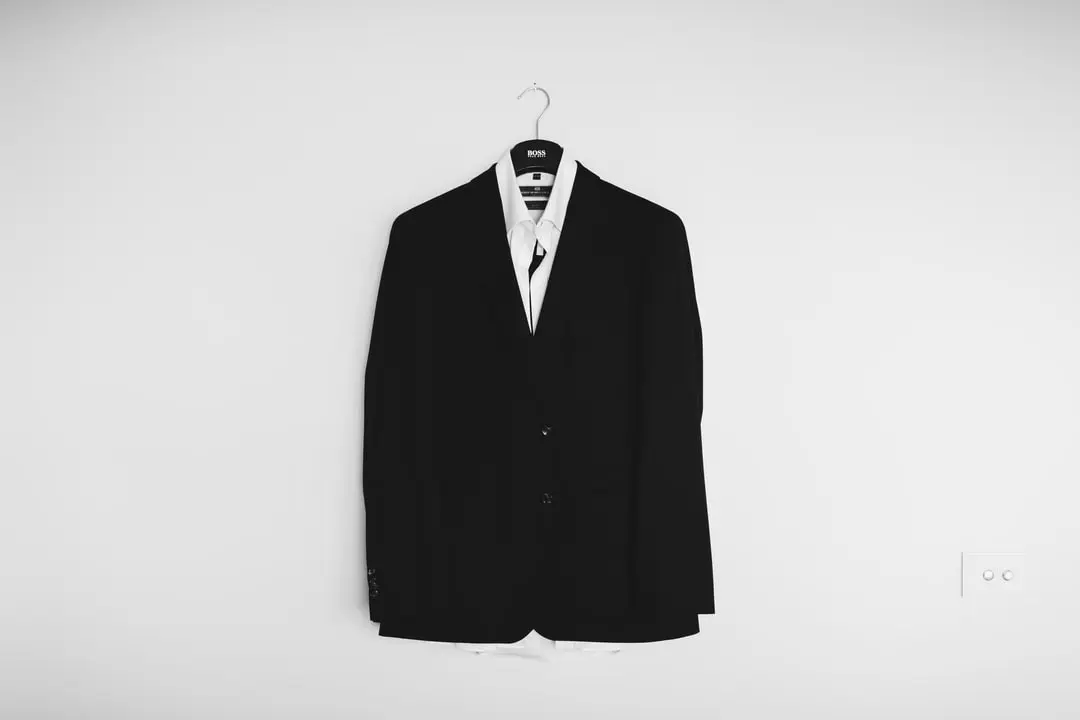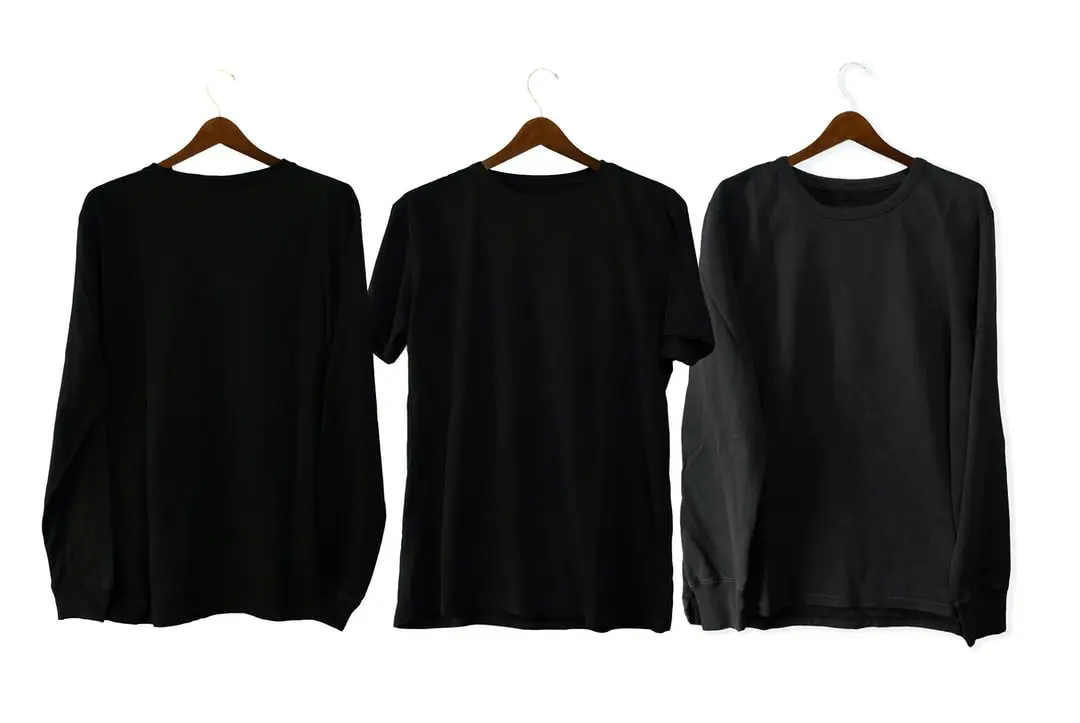We’ve all been there – you’re in a rush, and you grab your favorite shirt out of the dryer, only to find it clinging tightly to your pants like a star-crossed, static-infused love affair. It’s the inconvenient ballet of the laundry room, an age-old mystery that leaves even the savviest of laundry-doers scratching their heads.
Why, exactly, do our clothes feel the need to stick together in the dryer like their lives depend on it? Could this be the love story of fabrics, or is there something more scientific going on beneath the heaps of laundry?
This post aims to unravel the tangled web of static and help you conquer the dreaded phenomenon of clothes sticking together in the dryer. Get ready to dive deep into the land of lint filters, fabric softeners, and the static that wreaks havoc on our wardrobes.
Table of Contents
Reasons Why Your Clothes Stick Together

1. Static electricity
Static electricity is a common phenomenon that occurs when clothes are dried in a dryer. This is especially true for synthetic fabrics, such as polyester and nylon, which are more prone to static buildup than natural fibers like cotton or wool. As clothes tumble and rub against each other inside the dryer, they can build up a static charge. This charge causes the garments to cling together, making them difficult to separate.
The process of static electricity build-up begins when the clothing items in the dryer experience friction. This friction generates an imbalance of electric charges within the material’s surface. As a result, positive and negative charges are created on separate pieces of clothing. When these oppositely charged clothes come into contact with each other, they stick together due to the attractive force between them.
One common solution to prevent static electricity from building up in the dryer is to use anti-static dryer sheets. These sheets are coated with a thin layer of chemicals that help neutralize the electric charge created during the drying process. By neutralizing the charge, dryer sheets effectively prevent the garments from sticking to one another.
Another option for reducing static cling is to add a ball of aluminum foil or a clean, damp cloth to the dryer. These items can help dissipate the static charge on the clothing by providing a pathway for the electric charge to move and neutralize itself. Additionally, using a lower heat setting during the drying process can also help prevent static electricity buildup, as it reduces the friction between garments.
2. Overloading the dryer
When drying clothes, one common issue that occurs is the overloading of the dryer. This means putting too many clothes into the machine at one time, leading to a number of potential problems. One such issue that can arise from overloading is the bunching of clothes and subsequent tangling, resulting in clumps of fabric that become difficult to separate.
The dryer, designed to circulate and evenly heat clothes for efficient drying, struggles to perform optimally when overloaded. Airflow is restricted, and the process of tumbling clothes to maintain heat distribution is impeded. Consequently, when clothes become entangled and bunched together, it interferes with the evaporation of moisture, leaving certain garments wet and others dry.
In addition to drying inefficiency, overloading the dryer also puts undue stress on the appliance. This can lead to increased energy usage, parts wearing out faster, and reduced drying performance. Additionally, dryer lint can become trapped in the clothes, exacerbating the issue of clumps of fabric sticking together, as well as being a potential fire hazard.
To prevent these problems, it is best to avoid overloading the dryer. Instead, opt for several smaller loads, ensuring the clothes have ample space to tumble and dry properly. By doing so, the issue of clothes sticking together due to overloading will be minimized, and the dryer will function more efficiently, saving time, and energy, and prolonging the life of the appliance.
3. High heat setting
One common reason for clothes sticking together in the dryer is the use of high heat settings. When the heat inside the dryer is set too high, it can cause the clothes to become more malleable, which in turn increases the likelihood of them sticking together. This is especially true for more delicate fabrics, which are prone to clinginess and may adhere to each other or other garments in the dryer.
Using a lower heat setting can help prevent this issue. Not only does this help reduce the chances of clothes sticking together, but it also helps protect the fabric and maintain the quality of the garments. Lower heat settings also help in conserving energy and prolonging the life of your dryer.
Additionally, it is essential to check on the clothes periodically while they are drying on a high heat setting. This can help ensure that the garments are drying evenly and can help identify any potential clumping or sticking issues before they become a more significant problem. Be sure to separate any tangled or bunched-up clothes before allowing them to continue drying.
In conclusion, using a high heat setting on your dryer can contribute to clothes sticking together. However, by lowering the heat setting, checking on the clothes periodically, and separating any garments that may be sticking together, you can help prevent this issue and ensure your clothes remain in top condition.
4. Fabric type
When it comes to drying clothes, it is not uncommon to find garments sticking together or clumping inside the dryer. One of the main reasons this happens is due to the different types of fabric being dried together. As various fabrics have distinct properties, they tend to dry at varying rates, causing them to clump together. This can make laundry look rumpled, feel damp, and may even prolong the drying process.
To prevent this issue, it is a good practice to separate heavy fabrics from lighter ones and dry them in separate loads. For example, separating towels, denim, and heavy cotton items from lightweight clothing, such as silk or synthetic materials, can help ensure that all garments dry more evenly. Drying clothes in appropriate groupings also helps to reduce the likelihood of fabric damage, as some materials may be more sensitive to heat or friction than others.
Additionally, drying similar fabrics together can not only promote better drying efficiency but also helps maintain the longevity of your garments. For instance, delicate materials may be damaged when exposed to high heat or rough fabrics, such as denim. By separating items based on their fabric type, you can choose the appropriate dryer settings for each load, ensuring optimal care for your clothes.
In summary, paying attention to fabric types and sorting laundry accordingly can make a significant difference in the drying process. Taking the time to separate heavy fabrics from lighter ones, and adjusting dryer settings accordingly, will result in less clumping, better-dried clothes, and ultimately, prolong the life of your garments.
5. Synthetic textiles
One common issue that people encounter while using a dryer is that their clothes tend to stick together. This annoying phenomenon can usually be attributed to static electricity, which is produced when synthetic textiles rub against each other. Synthetic textiles are known for their propensity to generate static electricity when they come into contact with one another. This is because the materials have different charges, which causes them to attract or cling together.
Static electricity is more active in dry environments, as the lack of moisture in the air causes clothes to stick together more easily. This problem is particularly prevalent during the winter months when the air is often dry and cold. In such conditions, it is essential to be mindful of the fabrics we choose to wash and dry together, as some materials might exacerbate the issue.
One way to mitigate this problem is by separating your synthetic textiles from other types of fabrics when washing and drying them. This can help prevent the transfer of charges between different materials and reduce the chances of clothes sticking together. Some people also recommend using dryer sheets or fabric softeners to combat static electricity, as these products can help neutralize the charges and make the clothes less prone to clinging.
Additionally, you could consider air-drying your clothes instead of using a dryer, as this can help reduce the chances of static electricity forming between synthetic textiles. Air-drying your clothes also has the added benefit of being more energy-efficient and environmentally friendly.
In conclusion, when synthetic textiles rub against each other, they generate static electricity which causes clothes to stick together in the dryer. By taking a few simple steps such as separating synthetic fabrics from other materials, using dryer sheets or fabric softeners, or air-drying your clothes, you can help minimize the issue and avoid the frustration of dealing with clingy clothes.
6. Dry air
During the winter months, when the air is drier, clothes are more susceptible to a buildup of static electricity. Dry air is a significant factor contributing to static cling in clothes. This is because the absence of moisture in the air makes it easier for static charges to build up on fabrics as they rub against each other in the dryer. This static cling can then cause clothes to stick together, making them difficult to separate and possibly even resulting in damage to the fabric itself.
To combat the effects of dry air on your laundry, consider using a humidifier in your home, especially during the colder months. By increasing the moisture in the air, the likelihood of static cling in your clothes is reduced, making it easier to separate them after a trip through the dryer. Additionally, be mindful of the types of fabrics you are laundering together, as synthetic materials such as polyester or nylon are more prone to static buildup than natural fibers like cotton or wool.
Another helpful tip is to avoid overloading your dryer, allowing for better air circulation, which can help prevent clothes from sticking together. It’s also a good idea to use a lower heat setting, as higher temperatures can make clothes more malleable and prone to sticking. Furthermore, consider using dryer balls or dryer sheets in each load, as these can help to reduce static electricity and improve overall air circulation within the dryer.
In conclusion, understanding the role that dry air plays in clothes sticking together in the dryer is essential for preventing this issue. By implementing a few simple solutions, such as using a humidifier or monitoring the types of fabrics in each load, you can minimize the effects of dry air and keep your clothes from sticking together, ensuring that they remain in the best possible condition.
7. Tumbling motion
One factor contributing to clothes sticking together in the dryer is the tumbling motion of the dryer drum itself. As the drum rotates, clothes are constantly being tossed around, causing some garments to get entangled with each other. This can then lead to clumps of fabric that may be difficult to separate once the drying cycle has finished. To minimize this issue, it’s a good idea to keep an eye on the contents of the dryer while it’s in operation and intervene if needed, to prevent clothes from becoming too severely tangled.
There are a few ways to tackle the issue of the tumbling motion causing tangles in your clothes. Firstly, sort your laundry by fabric type and size before placing it in the dryer; this helps to reduce the chances of certain garments getting tangled together. Additionally, consider using mesh laundry bags to separate smaller items, such as socks or lingerie, from larger ones, like sheets or towels. This not only prevents tangling but also protects delicate items from potential damage.
Another helpful tip is to not overload the dryer, as this can exacerbate the issue of clothes becoming tangled. By leaving enough space for the garments to tumble freely, you help prevent them from getting entangled with each other. Furthermore, ensure that you are using the correct dryer setting for your load; this helps to maintain optimal tumbling motion and prevent excessive wrinkling or tangling of clothes. By taking these simple measures into account, you can minimize the effect of the tumbling motion on your clothes and ensure they come out of the dryer tangle-free and ready for use.
8. Dirty dryer
Clothes sticking together in the dryer can be quite frustrating, especially when you are in a hurry to wear them. One of the lesser-known reasons behind this problem is a dirty dryer. A dirty dryer can obstruct the proper airflow and hinder the drying process, causing clothes to stick together.
Over time, dust, lint, and other debris can accumulate in the dryer’s interior, clogging the vents and filters. This buildup not only affects the dryer’s efficiency but also leads to static electricity, which in turn causes clothes to cling onto one another when they are still damp.
To resolve this issue, it is essential to clean your dryer regularly. Start by removing the lint filter and cleaning it after every use. Additionally, ensure that the dryer vent and exhaust duct are free from blockages, as these can also affect its performance.
Not only will cleaning your dryer help prevent clothes from sticking together, but it will also improve its efficiency and prolong its lifespan. As a bonus, maintaining a clean dryer will also lower the risk of potential hazards like fires that may occur due to excessive lint buildup.
In conclusion, a dirty dryer can lead to clothes sticking together by obstructing airflow and promoting static electricity. By keeping your dryer clean and well-maintained, you can enjoy a more efficient drying experience and say goodbye to tangled, clingy clothes.
9. Lack of dryer sheets
One reason why clothes may stick together in the dryer is due to the lack of dryer sheets. These handy little sheets are designed to help reduce static electricity, making it easier for clothes to move around freely without clinging to one another. By incorporating dryer sheets into your laundry routine, you can effectively combat the problem of clothes sticking together in the dryer.
Dryer sheets work by releasing certain chemicals that minimize the static electricity in the dryer. This, in turn, helps improve air circulation, which is crucial in preventing clothes from sticking together. As the dryer sheet tumbles around with the clothes, the chemicals coat the fabrics, helping to reduce friction and allowing the clothes to glide smoothly against one another.
To successfully use dryer sheets in your laundry routine, simply toss one or two into the dryer before starting the cycle. You may find that you need to adjust the amount of dryer sheets used, depending on the size of the load. Don’t be afraid to experiment to find the right balance that works best for you.
In addition to using dryer sheets, it’s also helpful to separate different types of fabrics when drying your clothes. This can further prevent static electricity buildup, which is a primary cause of clothes sticking together in the dryer.
In conclusion, incorporating dryer sheets into your laundry routine can significantly reduce the problem of clothes sticking together in the dryer. By addressing the issue of static electricity and improving air circulation, you can ensure that your clothes remain separate and easy to fold, making laundry day a breeze.
How to Prevent Your Clothes from Sticking Together After Washing
1. Separate lightweight fabrics from heavier items, such as towels and jeans.
One smart trick to prevent clothes from sticking together in the dryer is to separate lightweight fabrics from heavier items, such as towels and jeans. By doing this, you can ensure a more efficient and even drying process. This not only helps to reduce clumping and tangling, but it also prevents moisture absorption by lighter fabrics.
When you take the extra time to sort your laundry into different fabric types and weights, you’ll find that your clothes come out of the dryer looking and feeling fresher. Lighter fabrics will dry more quickly, while heavier items like towels and jeans require a bit more time and heat in the dryer. By separating these different types of clothing, you can optimize the drying process—resulting in fewer wrinkles and less static buildup.
Furthermore, separating your laundry based on fabric weight is also an environmentally friendly practice. Drying lightweight fabrics separately from heavier items allows for shorter drying times, ultimately saving energy and leaving a smaller footprint on our planet.
So, next time you’re doing laundry, remember to take a moment to separate lightweight fabrics from heavier ones. This simple trick can make all the difference in ensuring your clothes look their best when they come out of the dryer, while also making the drying process more efficient and environmentally friendly.
2. Avoid overcrowding the dryer
One common issue many people face when doing laundry is finding clothes sticking together in the dryer. This often results in wrinkles and static cling, making the process of folding and putting away clothes more time-consuming. One factor that contributes to clothes sticking together is overcrowding the dryer. To avoid this problem, it’s important to ensure that there is enough space inside the dryer for the clothes to move freely.
When a dryer is too full, clothes have less room to tumble and rub against each other, which can contribute to static cling and wrinkles. Overcrowding can also hinder proper air circulation within the dryer, leading to uneven drying and longer drying times. To prevent these problems, it’s crucial to avoid overloading the dryer and separate clothes into smaller loads if necessary.
Additionally, sorting clothes by fabric type is another key step in ensuring that they don’t stick together. Heavier materials, such as towels and denim, may require more time to dry compared to lighter fabrics like cotton or silk. Grouping similar fabric types together for separate dryer cycles can help maintain an even distribution of heat and air circulation, reducing the likelihood of clothes sticking together.
In conclusion, ensuring that your dryer is not overcrowded and taking the time to sort clothes by fabric type can go a long way in preventing clothes from sticking together. By following these simple steps, you can enjoy wrinkle-free, static-free laundry that’s easier to fold and put away.
3. Add a dryer sheet or fabric softener to the dryer
As the delightful scent of freshly laundered clothes wafts through the air, it is often accompanied by the unfortunate phenomenon of clothes sticking together in the dryer. This sticking and clumping of clothes, also known as static cling, can be quite maddening. However, adding a dryer sheet or fabric softener is a simple solution to reduce this static cling and leave clothes feeling soft and smooth.
Dryer sheets are specifically designed to combat static cling by absorbing excess static electricity formed by different fabrics during the drying cycle. These sheets consist of softening compounds that, when heated in the dryer, transfer to the clothes, giving them a smooth and soft feel. The fabric softeners in dryer sheets are positively charged, which helps balance out the negatively charged electrons, resulting in reduced static cling. With dryer sheets on board, your favorite shirts, pants, and towels will no longer stick together after their spin in the dryer.
Another option that can help separate clothes is using liquid fabric softener during the washing cycle. As with dryer sheets, fabric softeners contain positive ions that neutralize the negative charge of static cling. This results in clothes not just feeling soft, but also preventing the sticking together during the drying process. Simply following the instructions on the fabric softener’s bottle will ensure minimal static cling in your clothing after every laundry session.
In conclusion, dryer sheets and liquid fabric softeners are excellent solutions for preventing clothes from sticking together in the dryer. These products work by balancing out the charged particles that cause fabrics to cling, ensuring that each laundry experience is a pleasant and stress-free one. So, next time you do laundry, don’t forget to add a dryer sheet or fabric softener to your routine and say goodbye to the pesky static cling.
4. Use a low heat setting for delicate fabrics
One of the most important ways to prevent your clothes from shrinking and becoming misshapen is by using a low heat setting when drying delicate fabrics. High heat can have detrimental effects on your garments, causing them to constrict and lose their original shape. By choosing a lower heat setting, you are reducing the risk of damaging your clothes and ensuring they maintain their original size and form.
To begin with, always read the care labels on your garments and follow the recommended drying instructions. These labels will provide essential information about the appropriate heat settings and drying times for delicate fabrics. If you are unsure, it is always better to opt for a lower heat setting to be on the safe side.
Next, consider separating delicate fabrics from heavier ones when drying. This will allow you to choose the appropriate heat setting for each group of clothes without compromising the delicate fabrics. Also, try to avoid overloading the dryer, as this can cause excessive friction between garments and contribute to shrinkage.
Finally, remember that air drying is another effective method for delicate fabrics. Hanging your clothes on a drying rack or outside on a clothesline can help preserve their shape and size without the risk of heat-induced shrinkage. This is especially helpful for garments made of wool, cotton, or other materials known to shrink when exposed to high temperatures in the dryer. By adopting these practices, you can prolong the lifespan of your delicate clothing and keep them looking their best for years to come.
5. Turn clothing items inside out before drying
One effective way to maintain the appearance and longevity of your clothes is by turning them inside out before drying. This simple action helps to preserve the color and texture of your garments, ensuring they look fresh and new for a longer period of time.
When you turn your clothes inside out, you are essentially shielding the outer layer from the heat and friction generated in the dryer. This prevents the direct exposure of the outer surface to any potential damage, including color fading or snagging on other items. Consequently, your clothes will retain their vibrant colors and pristine condition.
Furthermore, turning your garments inside out can also protect any embellishments you may have on your clothing. Decorative elements like sequins, buttons, or embroidery tend to be sensitive to heat and friction. By keeping them on the inside during the drying process, you are prolonging their durability and ensuring they remain intact.
In addition, drying clothes inside out can help to avoid lint buildup on the outer layers of your garments. Lint tends to accumulate more on the exterior surfaces due to friction with other clothes in the dryer. By reversing your clothes, you’re less likely to experience this issue.
In summary, turning your clothing items inside out before drying is a simple yet effective measure to protect your garments from fading, damage, and lint buildup. Not only does this prolong the lifespan of your clothes, but it also maintains their pristine appearance and helps you look your best every day.
6. Remove items promptly from the dryer after the cycle is complete
One of the key factors for preventing clothes from sticking together and wrinkling in the dryer is to remove items promptly after the drying cycle is complete. When clothes are left sitting in the dryer for an extended period of time, they can become compressed and tangled. This not only leads to clothes sticking together but also causes unwanted wrinkles and creases.
To avoid this issue, it is essential to promptly remove clothes from the dryer as soon as the cycle is finished. By folding or hanging clothes immediately, you can better maintain their shape and appearance. This also helps to keep them from getting stuck together, making it easier to sort and store your laundry.
In addition to removing clothes promptly, it’s a good idea to develop a habit of checking the dryer periodically throughout the drying process. This allows you to ensure that items are drying evenly and not clumping together. If necessary, you can reposition and separate any clothes that may have become tangled during the tumble.
By following these simple tips, you can ensure that your clothes remain in optimal condition after a trip through the dryer. Removing items promptly not only prevents them from sticking together but also reduces the likelihood of unsightly wrinkles and creases, helping your garments to stay looking their best.
Conclusion
In conclusion, clothes stick together in the dryer due to several reasons. Firstly, synthetic fabrics tend to create more static electricity which can cause clothes to cling together. Secondly, overloading the dryer with too many clothes or filling it up with items of different weights can cause them to become tangled. Thirdly, excessive heat can cause fabrics to shrink and bind together. To prevent clothes from sticking together, it’s essential to use dryer sheets or dryer balls to reduce static electricity, avoid overloading the dryer, and set the dryer to a lower heat setting.


